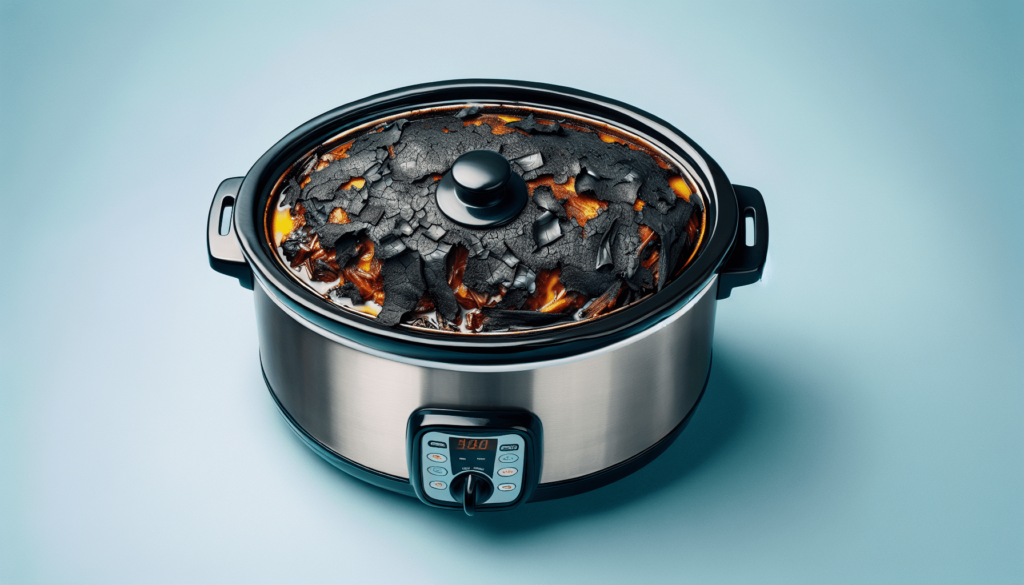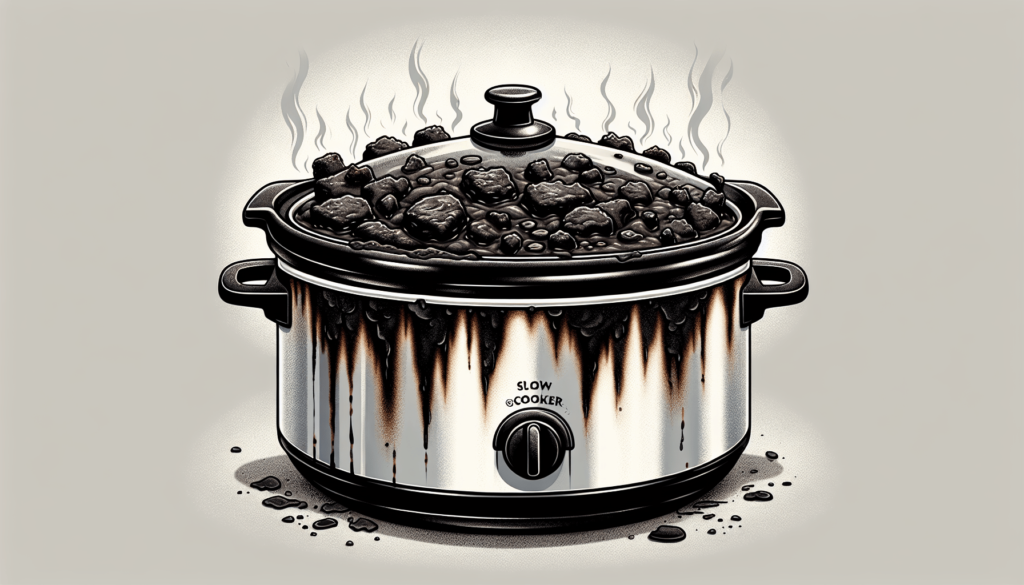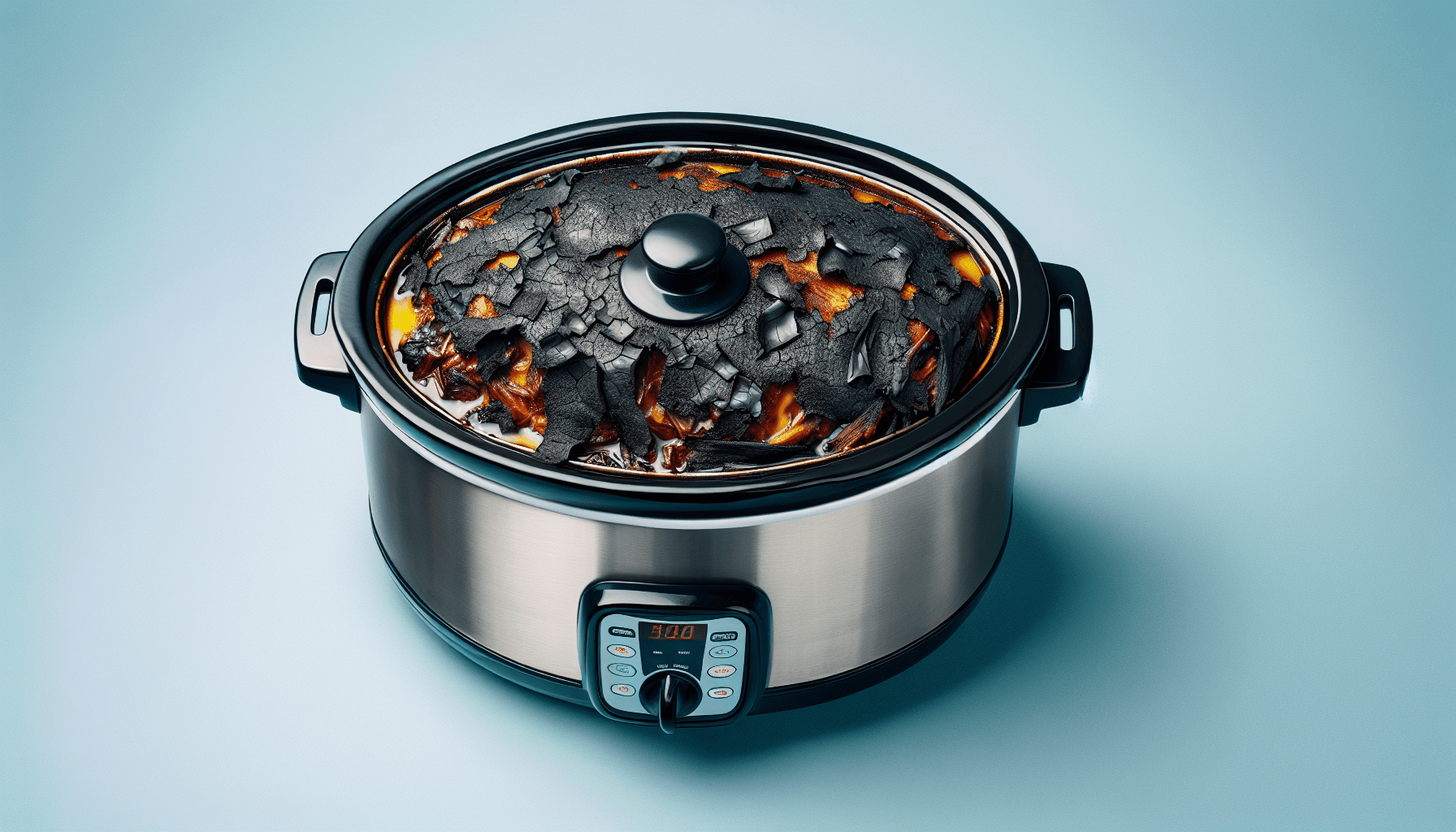If you’re a fan of using a slow cooker to make delicious, tender meals with minimal effort, then you already know how invaluable this kitchen appliance can be. However, like any cooking tool, there are certain things you should avoid doing with a slow cooker to ensure the best results. In this article, we’ll explore what not to do with a slow cooker so you can avoid common pitfalls and create mouthwatering meals every time.

Overfilling the Slow Cooker
One common mistake people make when using a slow cooker is overfilling it. While it may be tempting to cram as much food as possible into the pot, doing so can have negative consequences. Overfilling the slow cooker can cause uneven cooking, as the food in the middle may not cook thoroughly. The ingredients on the bottom may become mushy, while the ones on top remain undercooked. This can lead to an unsatisfying and inconsistent meal.
Additionally, overfilling the slow cooker can increase the risk of foodborne illness. When the pot is packed too tightly, the heat may not be able to reach all of the food, creating an environment in which bacteria can thrive. It’s important to leave some room for the heat to circulate and ensure that all ingredients reach a safe internal temperature.
Furthermore, overfilling the slow cooker can result in a messy cleanup. If the pot is filled beyond its recommended capacity, there is a greater chance of liquid spilling over and making a mess on your countertop or inside the slow cooker itself. This can be time-consuming and frustrating to clean up, especially after you’ve enjoyed a delicious meal. Therefore, it’s important to follow the manufacturer’s guidelines regarding the maximum fill level of your slow cooker to avoid these issues.
Opening the Lid Frequently
Another pitfall to avoid when using a slow cooker is constantly opening the lid throughout the cooking process. It may be tempting to check on the progress of your meal or give it a stir, but doing so can have negative consequences.
Firstly, opening the lid frequently adds cooking time. Each time the lid is lifted, precious heat escapes from the slow cooker, causing the temperature inside to drop. This delay in heating can significantly lengthen the cooking time, meaning your meal may take much longer to be ready than anticipated. It’s important to trust the slow cooking process and resist the urge to peek inside too frequently.
Moreover, opening the lid disrupts the cooking process. Slow cookers rely on a steady and consistent temperature to work their magic. When the lid is lifted, the heat is interrupted, and the cooking process is interrupted. This can lead to unevenly cooked food and result in a less satisfactory meal. It’s best to keep the lid on and let the slow cooker do its job without interference.
Using the Wrong Cooking Temperature
Using the wrong cooking temperature in a slow cooker can have adverse effects on your meal. It’s crucial to understand the proper temperature settings and timings to achieve the desired results.
Cooking on high for too long can be problematic. While high heat is necessary to bring a slow cooker up to temperature quickly, leaving it on high for an extended period of time can lead to overcooking. Meats may become tough and dry, and vegetables can turn to mush. It’s important to follow the recipe’s instructions and switch to a lower setting once the desired level of doneness is achieved.
On the other hand, cooking on low for a short time can also be problematic. Slow cookers are designed for long, slow cooking. If you try to rush the process by cooking on low for only a couple of hours, you may end up with undercooked food that lacks flavor and tenderness. It’s important to plan ahead and allow enough time for your meal to cook properly.
Adding Dairy Products Early
When using dairy products in your slow cooker recipes, it’s important to add them at the appropriate time to avoid unwanted outcomes. Adding dairy too early can result in curdling, affecting both the texture and flavor of the dish.
Dairy products such as milk, cream, and cheese are prone to curdling when exposed to high temperatures for prolonged periods. To prevent this, it’s best to add dairy products towards the end of the cooking process, or as directed in the recipe. This will ensure they are heated through without being subjected to excessive heat for an extended period of time.
Curdled dairy not only alters the texture of your dish, but it can also negatively impact the flavor. It may become grainy or develop an unpleasant taste. To avoid this, it’s essential to follow the recommended guidelines and add dairy ingredients at the appropriate time.

Using Frozen Ingredients
While slow cookers are a fantastic tool for cooking frozen ingredients, it’s important to be aware of the potential drawbacks. Using frozen ingredients can increase cooking time significantly and may promote bacterial growth if not handled properly.
Frozen ingredients take longer to come up to temperature, which means your meal will need more time to cook. It’s essential to factor in this additional cooking time when using frozen meat, vegetables, or other ingredients. Allowing them to thaw partially before placing them in the slow cooker can help reduce cooking time and ensure that your food reaches a safe internal temperature without sacrificing taste or texture.
Furthermore, using frozen ingredients without proper thawing can promote bacterial growth. Slow cookers operate at lower temperatures than stovetop or oven cooking methods, creating an environment where bacteria may multiply if not handled correctly. To avoid this, it’s important to follow safe food handling practices and ensure that frozen ingredients are thawed properly before adding them to the slow cooker.
Using the Wrong Size Slow Cooker
Choosing the right size slow cooker is essential for achieving optimal results. Using a cooker that is either too large or too small can lead to various issues and negatively impact the final outcome of your meal.
Using a slow cooker that is too large for the amount of food being prepared may result in overcooking or drying out. When there is an excess of empty space in the cooker, the heat is not distributed evenly, and the food can become overcooked around the edges or dry out due to prolonged exposure to heat. It’s important to select a slow cooker that is appropriately sized for the amount of food you plan to cook to ensure even and consistent results.
Conversely, using a small slow cooker for a large recipe can cause overflowing. When the cooker is filled beyond its recommended capacity, there is a risk of food spilling over and creating a mess. It’s important to consider the volume of the ingredients and ensure that they will fit comfortably in the slow cooker without exceeding its capacity.
Adding Too Much Liquid
While slow cookers rely on liquid to create moist and flavorful dishes, it is crucial to strike the right balance. Adding too much liquid can dilute flavors and result in a watery, less enjoyable dish.
It’s important to follow the recipe’s guidelines when it comes to adding liquid to your slow cooker. Too little liquid can result in dry and bland food, while too much liquid can thin out the flavors and create a lackluster dish. It’s best to start with the recommended amount of liquid and adjust as needed based on personal preference or specific recipe instructions.
Additionally, certain ingredients release moisture during the slow cooking process, such as vegetables. Taking this into account can help avoid adding excess liquid unnecessarily. It’s important to strike the right balance to ensure a delicious, well-rounded final result.
Not Browning Meat Before Slow Cooking
While slow cooking is often associated with convenience and simplicity, taking a few extra steps can elevate the flavors of your meal. One common mistake is to skip browning meat before placing it in the slow cooker, which can result in missed flavor development and a pale and unappealing appearance.
Browning meat before slow cooking helps to develop rich flavors and enhances the overall taste of the dish. This step adds depth and complexity to the final result, making it a worthwhile addition to your slow cooking routine. By searing the meat in a hot skillet before transferring it to the slow cooker, you can achieve a satisfying caramelization that contributes to the overall deliciousness of your meal.
In addition to the flavor benefits, browning meat also enhances the visual appeal. Meat that has been browned before slow cooking develops an appetizing golden crust, creating an appealing appearance that is sure to impress. It’s important to take the extra time to brown your meat before adding it to the slow cooker for the best results.
Using the Slow Cooker for Deep Frying
While slow cookers are incredibly versatile kitchen appliances, it’s important to recognize their limitations. Using a slow cooker for deep frying is a mistake that can have negative consequences and pose potential dangers.
Slow cookers are not designed for high-temperature frying. The heating element of a slow cooker is not capable of reaching the high temperatures required for deep frying. Attempting to fry food in a slow cooker can result in undercooked or greasy food, as the oil will not reach the necessary temperatures for proper frying. This can lead to an unappetizing and potentially unsafe final product.
Moreover, using a slow cooker for deep frying can be dangerous and result in oil splatters. Slow cookers are not equipped with the safety features and built-in mechanisms that specialized deep fryers have. The risk of hot oil splattering can lead to burns or kitchen accidents, causing harm to you and those around you. It’s important to use the appropriate equipment for deep frying and follow recommended safety practices.
Neglecting Food Safety Practices
When using a slow cooker, it’s vital to prioritize food safety. Neglecting proper food safety practices can lead to foodborne illnesses and put your health at risk.
Leaving perishable ingredients at room temperature for too long is a common mistake that can promote bacterial growth. The slow cooker operates at a low heat setting, which means it takes longer for the temperature inside to rise sufficiently to kill any bacteria that may be present. It’s important to refrigerate perishable ingredients until ready to use and avoid leaving them at room temperature for an extended period.
Another important aspect of food safety is properly washing hands and utensils. Cross-contamination can occur if hands or utensils that have come into contact with raw meat or other potentially dangerous ingredients are not washed thoroughly before handling other items. It’s crucial to practice good hygiene and wash hands and utensils properly to minimize the risk of contamination.
In conclusion, using a slow cooker can be a convenient and efficient way to prepare delicious meals. However, it’s important to avoid certain mistakes that can negatively impact the outcome of your dishes. By being mindful of overfilling the slow cooker, avoiding frequent lid openings, using the correct cooking temperatures, adding dairy products at the appropriate time, handling frozen ingredients properly, selecting the right size slow cooker, adding the right amount of liquid, browning meat before slow cooking, avoiding using the slow cooker for deep frying, and practicing proper food safety, you can ensure that your slow cooker meals turn out delectable, safe, and enjoyable. Happy slow cooking!
